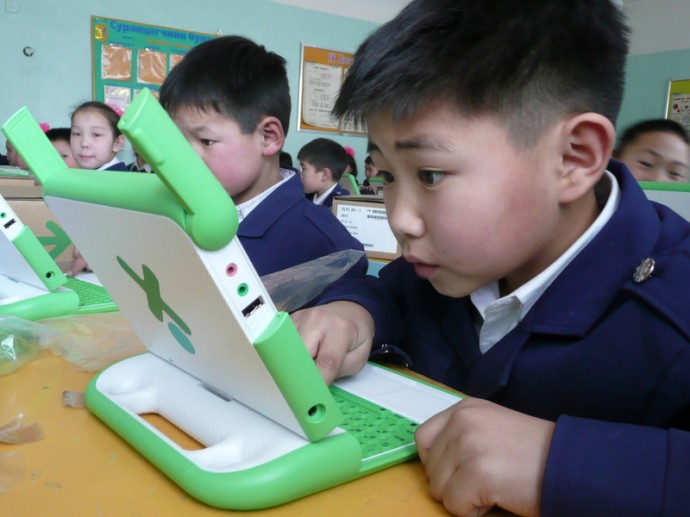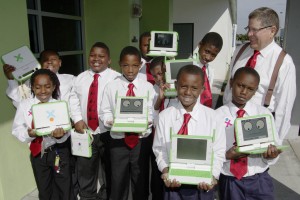
(MintPress)—The idea that access to technology is vital to a quality civic life might not be new- but the way in which governments, global non-profits and others are setting out to bridge the technological divide is. In a world fraught with conflict, disease, famine and injustice, poverty plays a significant role in many of those problems. Many are realizing that if you want to transform society, eliminate power differentials and realize a truly free and democratic world, technology plays an important part.
Last year a special report from the United Nations declared Internet access a human right, with special rapporteur to the United Nations Frank LaRue stating
“”Given that the Internet has become an indispensable tool for realizing a range of human rights, combating inequality, and accelerating development and human progress, ensuring universal access to the Internet should be a priority for all states.”
The report also noted the important role that the Internet played in popular demonstrations in countries across the Middle East and North Africa during the Arab Spring protests “in mobilizing the population to call for justice, equality, accountability and better respect for human rights.” LaRue also mentioned that while Internet access is a basic human right, giving people that right is not yet always feasible in every country.
About one-fifth of the Earth’s population, or 1.1 billion people, currently live on less than $1 a day, according to the World Resources Institute. This is a tough statistic for Americans to even comprehend, many of whom are likely reading this on a laptop computer, which costs around $500 for a minimum performance PC. But a growing number of humanitarians are noting the important role technology – specifically providing access to technology for some of the most impoverished of the world’s population – can play in creating a peaceful and just world.
.
Global concerns
Recent reports reveal some even more stark statistics about how most of the world’s population lives: about 1.3 billion people across the globe are still living in darkness, literally, with no access to electricity. Another 2.7 billion still cook over open fires. A study from the 2008 Global Health Forum estimated that only about 5 percent of the world’s resources for health research are applied to the health problems of low and middle income countries, where 93 percent of the world’s preventable deaths occur.
Another study done in 2009 by the UN Food & Agriculture Organization found that 80 of the world’s poorest countries account for just 6 percent of global, publicly funded agricultural research and development (R&D), and just 2 percent of privately funded agricultural R&D.
Simon Trace, CEO of the international development charity Practical Action, which works to help poor people in the developing world use technology to transform their lives, writes on Mashable’s website, “So the problem is not just about the dissemination of existing technologies, but also about where our technology innovation effort lies. If you follow the money and see where the bulk of global investment in technology R&D goes, it is not into things that address some of the biggest issues of the day — the nearly 1 billion malnourished people in the world, the 1.3 billion without electricity, the nearly 1 billion still without access to clean drinking water.”
Trace also reminds people that as Bill Gates once said, there is something very wrong with a world that spends more on developing a cure for male baldness than it does on finding a vaccine for malaria.
.
The role of technology in creating change
Trace is part of a growing movement – one which is noticing the connection between social inequality and a lack of access to technology as a breeding ground for many of the world’s worst problems.
One example of a group trying to shape the world in a positive way through providing access to technology in the U.S. is the One Laptop per Child (OLCP) – a program of the Massachusetts Institute of Technology (MIT), which was engineered to combat the digital gap, specifically in countries where the price of the computer is an obstacle, and wealthier countries without enough resources to computerize classrooms in the schools.

The XO laptop, which was created by the group specifically for it’s mission of empowering the world’s poorest children through eduction, costs around $300. The laptop features wireless broadband that allows it to work as an ad-hoc network: each laptop can talk to its nearest neighbors, creating a local area network even if there are no routers nearby. The laptops are designed to be highly power efficient, enabling the use of innovative power systems (such as solar, human power, generators, wind or water power).
To carry out its mission, the organization created laptopgiving.org, a website to accept direct donations and ran a “Give 1 Get 1” (G1G1) offer starting in 2007. With a donation of $399 (plus a 25 dollar shipping cost) donors received a laptop of their own and OLPC sent another on their behalf to a child in a developing country. Shipments of the laptops sent to donors were restricted to addresses within the US. Then, the group went global. To date, OLPC has supplied nearly 2 million laptops world wide.
The Solar Electric Light Fund (SELF), an international development aid organization, is also working to end global poverty by bringing solar power and internet access to the world’s poorest people in remote rural areas. The U.S.-based group believes that energy is a human right, and collaborates with governments, industry and NGO’s across the world to provide training in the set-up, installation and maintenance of the solar electric and wireless systems to enable communities to become self-reliant.
Innovative technological measures like those enacted by OLPC are needed to fight poverty and social injustice on a global scale. Oxford University scholar Theo Papaioannou, whose work is in the areas of public policy and political theory with a specific focus on politics of innovation and development points out,
“The importance of innovation in human development is undeniable. Since the 1780s, successive scientific and technological revolutions have introduced new products and services with tremendous impact on well-being and general welfare. Yet innovation has not been available to all individuals and their societies. There are still countries in the developing world which lack proper access to fundamental innovations such as medicines, electricity, information and communication technologies (ICTs) and so on. Unequal generation and diffusion of innovation constitutes a major problem of global justice.”
The poorest 10 percent of the world’s population accounted for just 0.5 percent and the wealthiest 10 percent accounted for 59 percent of all the consumption, according to statistics from the World Bank Development indicators in 2008.
Non-profits are not the only entities seeking to promote peace and justice through the spread of technology. A new $2 billion five-year effort in the Indian State of Tamil Nadu is providing 6.8 million students in government-funded secondary schools and colleges with free laptops, costing the state government $292 per child. India contains the greatest number of people who live on less than $1 a day, according to information from the World Bank.
The World Bank also states that India still accounts for one-third of the world’s 1.4 billion poor people, and 43 percent of Indian children are malnourished, which equals a third of the world’s total. Over 35 percent of Indians are illiterate and more than 20 million children are out of school. But the program is not without controversy, with critics charging that that the money could be better spent in areas such as social services and infrastructure.
But it’s not just government that is joining the fight for technological justice in India. Industry is also playing a role in India’s business news daily Economic Times reported recently that 1.4 million units of the Aakash Android-based tablet, priced under $50 have been ordered, just two weeks after it was released for sale online by Datawind’s e-commerce partner Ncarry.com. As a result of the high demand, Datawind will be establishing three new factories in Cochin, Noida and Hyderabad in the first half of the year, spurring economic growth and helping to provide technology to those in poverty.
.
Keys to spreading technological justice
Still, the voice for change being achieved with the aid of technological advancements is growing stronger. Some of the ingredients necesacery for ameliorating injustice across the world include programs that foster national science and technology policies, state research funding, tax regimes and international trade agreements and regulations that value and foster collaboration and open source approaches to R&D, Trace says.
Fighting poverty by promoting sustainable development and mitigating climate change has also been noted by UN Secretary General Ban Ki-moon, who in 2011 called for a global revolution that would benefit some 1.6 billion people in developing countries still lacking access to electricity. Addressing the Fourth World Future Energy Summit in Abu Dhabi, United Arab Emirates, Ban said: “Our challenge is transformation. We need a global clean energy revolution — a revolution that makes energy available and affordable for all.”
Ban said that creating a climate that fosters technological justice is “essential for minimizing climate risks, reducing poverty and improving global health, and meeting the Millennium Development Goals (eight anti-poverty targets with a 2015 deadline), for global economic growth, peace and security, and the health of the planet.” Ban believes that investing in the intellectual capital that will create new, green technologies, increasing private and public spending on research and development, and governments creating the right incentives for this to happen is needed.
A system that place these ideals over processes based on competition and the capture of intellectual property rights is one which will yield greater social and environmental benefits. “The concept of technological justice requires a rethinking of how — both in the developing and the developed world — we encourage and nurture technological innovation that has social value and is environmentally sustainable. Engaging more people (especially poor women and men) in national debates around science and technology policy is important. Technological justice also requires us to understand and adapt the current drivers that power technological innovation,” Trace said.
Source: MintPress


